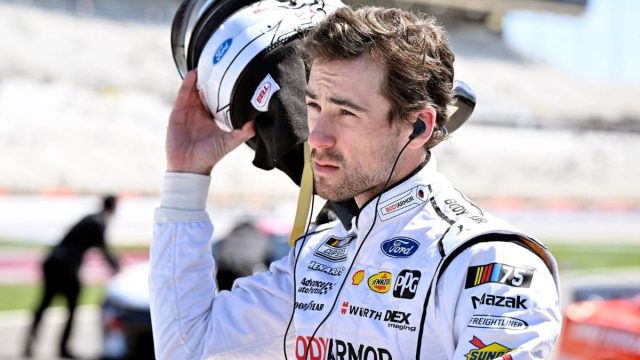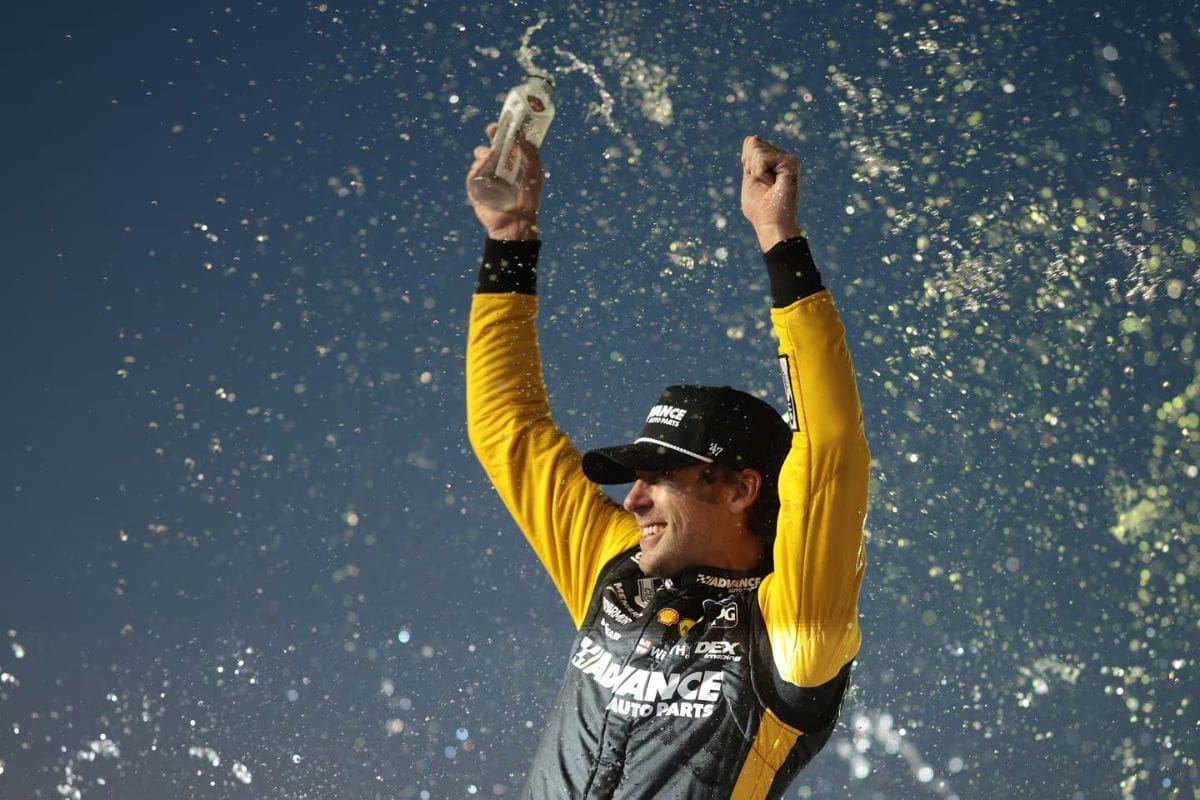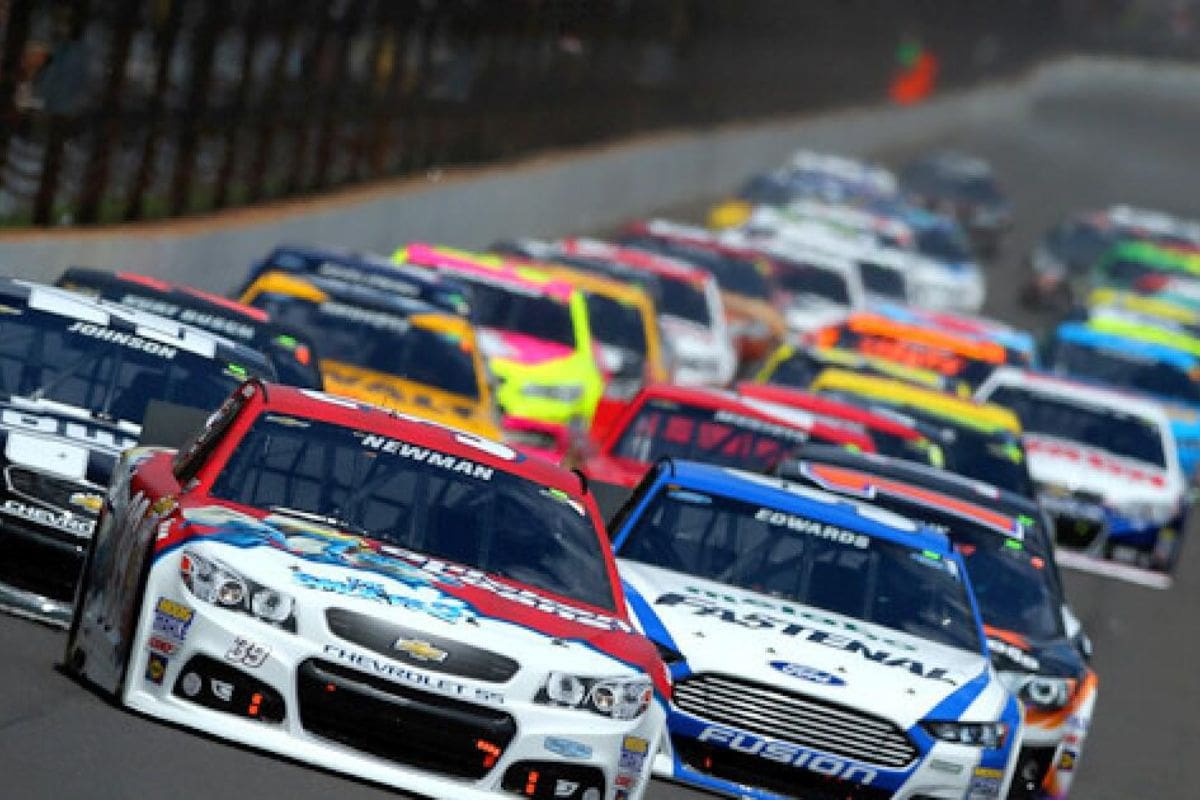Ryan Blaney Opens Up About the Pressures of NASCAR: Ryan Blaney Opens Up About the Pressures of NASCAR revealing a profound vulnerability in a sport often characterized by its bravado. His description of the disappointment as a near ‘death sentence’ emphasizes the intense psychological strain drivers face, where every race is a high-stakes gamble. Blaney’s openness not only highlights the relentless pursuit of excellence in NASCAR but also raises critical questions about the mental health implications for athletes in this demanding arena. As the conversation around mental resilience in sports continues to evolve, what strategies might be necessary to support drivers like Blaney?
Key Highlights
- Ryan Blaney expressed profound disappointment after the Brickyard 400, feeling the outcome significantly impacted his career trajectory.
- The emotional toll of high-stakes competition in NASCAR can lead to intense mental pressure and stress for drivers.
- Blaney’s tears after the race symbolize the psychological strain athletes endure in their relentless pursuit of success.
- He emphasized the importance of mental health awareness in NASCAR, advocating for resources to help drivers cope with pressure.
Blaney’s Reaction to Brickyard 400
Ryan Blaney expressed his profound disappointment, stating the emotional toll that such high-stakes competition exacts on drivers. Following a race that many considered a crucial moment in his career, Blaney’s emotional response resonated deeply with fans and fellow competitors. His assertion that the outcome felt like “a death sentence” highlighted the intense stress within NASCAR, where every fraction of a moment can determine fate. The controversial final laps, wherein Blaney felt that Kyle Larson and the overarching NASCAR regulations conspired against him, only compounded the anguish of narrowly missing victory.
Blaney’s tears were not merely reflective of a competitive setback; they were representative of the psychological strain that accompanies the relentless pursuit of excellence in motorsports. While fans often view racing through the lens of speed and spectacle, the emotional and mental challenges faced by drivers are frequently overlooked. Blaney’s frank expression of his feelings serves as a reminder that beneath the helmets and the high-octane performances lie individuals grappling with stress, expectations, and the weight of their ambitions.
Blaney invites a more profound understanding of the human element in NASCAR, emphasizing that the emotional scars from such races linger long after the checkered flag is waved.
NASCAR’s Thorny Side
The strains of NASCAR extend beyond the track, revealing a complex landscape where the pursuit of victory collides with the harsh realities of competition, as Ryan Blaney openly depicts. The recent Brickyard 400 serves as a poignant reminder of the sport’s inherent challenges and emotional toll. Following Kyle Larson’s victory, Team Penske’s disappointment was palpable, particularly for Blaney, who sought to honor his team owner, Roger Penske, at the prestigious Indianapolis Motor Speedway.
“How hard it is. And that’s with any professional sport. I have no idea what it’s like to try and hit a 100-mile-per-hour fastball. I know it’s extremely difficult, but I have never put myself in those shoes. It’s the same with racing. You don’t know how difficult it is to try to be on the edge of control every lap without stepping over it.”-(ryan)
Blaney’s acknowledgment of the sport’s physical and psychological demands invites a broader conversation about the misconceptions surrounding racing. As he noted, the difficulty of driving at such high speeds is akin to other elite sports, yet it remains shrouded in a veil of misunderstanding. The stresses are immense, and the consequences of failure can be devastating—not just for drivers but for entire teams and their legacies.
Intricacies of Being a Winning Driver
The complexities of being a winning driver in NASCAR requires not only exceptional skill but also an understanding of vehicle dynamics and race strategy. The pursuit of speed is an intricate dance between man and machine, where every fraction of a moment can determine the outcome of a race.
“How do you work on your car and your racecraft to try to get to that level of speed, and how do you beat the 38 other people out there around you? Anyone can drive a race car, but how the heck do you go faster than everybody else? That’s the hardest part about it, is trying to find that grip and limit. People who don’t race don’t have that experience of actually how difficult it is to be good and successful as a race car driver.”-(BLANEY)
As Ryan Blaney pointed out, the challenge lies not merely in driving but in consistently outperforming 38 other competitors on the track.
Achieving this level of performance necessitates a deep comprehension of one’s vehicle. A driver must fine-tune their car, optimizing its setup for varying track conditions and personal driving style. This involves adjusting elements such as tire pressure, suspension, and aerodynamics to enhance grip and minimize drag. A winning driver must also possess exceptional racecraft, which encompasses the tactical insight to navigate through traffic, manage tires, and plan pit stops effectively.
Moreover, the psychological aspect of racing is dominating. The ability to remain composed under stress, to make split-second decisions, and to anticipate the actions of competitors is what distinguishes elite drivers from their peers. Blaney’s insights highlight that the path to victory is paved with relentless preparation, focus, and a steadfast commitment to honing one’s skills.
Physical and Mental Challenges
Driving a racecar demands not only extraordinary skill but also an exceptional level of physical and mental resilience, as competitors face intense G-forces, extreme temperatures, and the psychological strain of high-stakes racing. The physical demands of NASCAR are often underestimated. Unlike the leisurely experience of driving a minivan, racecar drivers endure a rigorous test of strength and endurance.
The repetitive stress of navigating a vehicle at high speeds requires exceptional hand-eye coordination and core stability, as drivers must maintain control while experiencing lateral forces that can exceed 5 Gs. Moreover, the environment inside the car is intense, with temperatures soaring well beyond what one would encounter in everyday driving.
Concentration must remain steadfast, as even the slightest lapse in focus can lead to catastrophic consequences. The mental aspects of racing include tactical decision-making under immense strain while managing the emotional highs and lows that come with competition.
Ryan Blaney’s insights reveal a deeper understanding of these challenges, as he traverses the psychological landscape shaped by fierce rivalry and the burden of expectations. The road to mastery in NASCAR is littered with obstacles that extend beyond mere driving skill.
It requires dedication to physical training, mental preparation, and resilience to overcome both personal and competitive challenges. Balancing these elements is vital for any driver aspiring to excel, as the intersection of physical and mental endurance ultimately defines success on the track.
Engineering and Environmental Challenges
Navigating the engineering complexities and environmental extremes of NASCAR requires drivers to master not only the mechanics of their high-performance vehicles but also the relentless conditions that test their limits on the track. The unique engineering of racecars mandates considerable physical exertion, with drivers facing formidable challenges every lap. For instance, without power steering, drivers must exert up to 35 pounds of force to steer and an extra 135 pounds to brake, translating into a physically demanding experience that can resemble lifting weights for hours.
Compounding this challenge is the extreme heat within the cockpit, which can soar to over 135 degrees Fahrenheit (57 degrees Celsius) during races. This oppressive environment leads to severe sweating, dehydration, and poses a risk of heatstroke, greatly impacting a driver’s performance and mental acuity. As Jeff Gordon aptly noted when asked about it in 2016, “Most of what we deal with is just the heat,” the heat often overshadows other concerns, illustrating the crucial role environmental conditions play in a race.
Moreover, the relentless pursuit of victory introduces psychological strain that can challenge even the most seasoned competitors. Ryan Blaney’s reflections on the sport encapsulate this duality: the specialized mastery required to handle a racecar is matched only by the demanding environmental factors that drivers confront.
Understanding these engineering intricacies and environmental challenges is vital for appreciating the full scope of what it takes to excel in NASCAR, transcending mere narratives of success to reveal the true grit required to compete at such high stakes.
News in Brief: Ryan Blaney Opens Up About the Pressures of NASCAR
The emotional turmoil expressed by Ryan Blaney following the Brickyard 400 emphasizes the noteworthy mental strains faced by NASCAR drivers.
The sport’s high-stakes environment fosters intense expectations, which can lead to profound psychological strain.
Blaney’s open reflections highlight the importance for increased mental health awareness and robust coping mechanisms within the racing community.
Acknowledging these challenges is crucial not only for the well-being of drivers but also for fostering a culture that prioritizes mental health in competitive sports.
ALSO READ: NASCAR Defends Its Controversial Caution Call at Indianapolis, Ignoring Ryan Blaney’s Outrage



